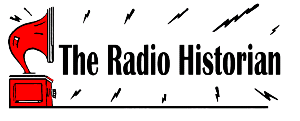|
www.theradiohistorian.org
Copyright 2011 - John F. Schneider
& Associates, LLC
[Return
to Home Page]
(Click
on photos to enlarge)
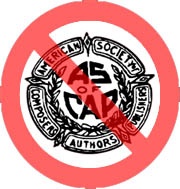
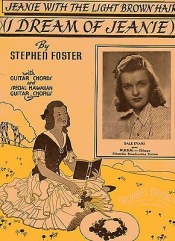
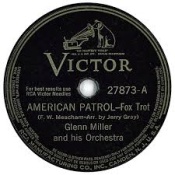
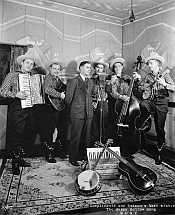 WDGY Happy Hollow Band

|
|
One
of the strangest episodes in American radio took place in 1941, when the major
players of the radio industry joined together and boycotted all music licensed
by the American Society of Composers, Authors and Publishers (ASCAP). In the process, it changed the face of
American popular music forever.
ASCAP
was created in 1914 by a group of songwriters led by Victor Herbert. It took for itself the task of enforcing the
1897 copyright law, which required that anyone performing music for profit have
the consent of the copyright owners. This was relatively easy in the days when all
music performance took place in theaters and other public venues - ASCAP simply
collected royalties from theater owners based on a percentage of their box
office sales. But the new radio industry
created a problem for them- there was no way to know the number of
listeners. This spawned two decades of
haggling between ASCAP and the radio industry.
Early broadcasters, led by Zenith president and pioneer Chicago
broadcaster Eugene F. MacDonald, formed the National Association of
Broadcasters (NAB) in 1925 specifically to deal with the music licensing problem. In 1932, ASCAP set a blanket annual fee of 5%
of a station's advertising revenue. While
burdensome on the radio industry, which continually fought for better terms,
this became the recognized formula throughout the 1930s.
Everything
fell apart in 1940 when ASCAP announced it would triple its music fees for
radio at the end of the year. Broadcasters
vehemently opposed this, arguing that the exposure the music industry received via
the radio helped popularize new music and boosted sales, but ASCAP refused to
back down. An impasse had been reached,
and drastic action was needed.
In
September of that year, industry leaders met at the NAB convention in San
Francisco and decided on a drastic move that was designed to demonstrate the
influence of radio on popular music --beginning on January 1, 1941, most radio
stations and all the networks would boycott ASCAP music. That meant that, virtually overnight, more
than 1 million ASCAP tunes disappeared from America’s airwaves.
In
1939, broadcasters and the NAB had established BMI (Broadcast Music,
Incorporated) as the radio industry's own music licensing agency. $1.5 million had been set aside to create new
music compositions for broadcasting. BMI
actively sought out new composers who weren't already contracted to ASCAP and
released their music to stations at a much more favorable rate. These were mostly third-rate tunes penned by
unknown composers. When the boycott
happened, there wasn’t enough BMI music to meet the need.
To
fill their airwaves, broadcasters turned to other sources of music. They
played songs from the public domain, such as familiar melodies derived from
classical works, and old American standards like "I Dream of Jeanne with
the Light Brown Hair". (Time
Magazine said that song was played so much that Jeanne's hair had turned
grey.) And they performed foreign music
that wasn’t licensed by ASCAP, especially Latin American standards like
"Perfidia" and "The Breeze and I". Still another source of new music were the
"hillbilly" and "race" tunes that ASCAP considered beneath
its dignity to license.
Radio’s
ASCAP boycott had far-reaching implications.
Most radio programs in the forties had opening theme songs, and many of
these were controlled by ASCAP. This
meant that Jack Benny couldn't play "Love in Bloom" on his violin,
and George Burns and Gracie Allen couldn't use their theme "Love
Nest", which had been written by ASCAP co-founder George M. Cohan. Instead,
substitute theme songs were found. (Some
astute program producers had avoided the problem completely by choosing public
domain theme songs, such as the Lone Ranger’s “William Tell Overture”, and the
Green Hornet’s “Flight of the Bumblebee”.)
The boycott also impacted the record industry, because recording artists
knew their releases of ASCAP tunes couldn't be heard on the radio. Some popular band leaders responded by
recording swing versions of public domain songs, such as Glenn Miller's
"American Patrol" and "Song of the Volga Boatmen".
Coinciding
with the start of the radio boycott, the Department of Justice began
investigating all the parties – ASCAP, BMI, and the networks - for possible
criminal monopolistic practices. This was
quickly resolved in February when ASCAP voluntarily signed a consent decree,
agreeing to offer broadcasters both blanket and per-piece licenses. However, several more months of negotiations
went by before all parties could agree on the rates to be charged. By the end of summer, ASCAP had signed an
agreement with NBC for 2.75% of net time sales on network broadcasts and 2.25%
for local station programs - less than half of what it had been getting before
1940.
The
ASCAP boycott officially ended in October of 1941 and America's popular music
returned to the airwaves. But something
had changed in those ten short months -- American listeners had been exposed to
new music genres that hadn't been heard previously, and they liked what they
heard. "Hillbillly" music quickly
morphed into the more refined "Western" music which became immensely
popular on radio throughout the forties, eventually leading to today's Country
music. "Race" music became
Rhythm and Blues, which then merged with jazz to become "Rock and
Roll". Latin rhythms and dances
like the Rumba and the Mambo became national sensations. In short, radio had demonstrated its tremendous
ability to shape popular music tastes.
Unfortunately,
with time broadcasters lost control of their own creation, BMI, and it today it
has become a functional clone of ASCAP. Once
again, the radio industry is battling with the music industry - this time over
performance royalties. In radio’s golden
era, most broadcast music was performed live, and so the artists were paid for
each performance. In fact, the American
Federation of Musicians exercised its own substantial power to keep most recorded
music off the airwaves. Of course, radio
today is the complete opposite, with almost no live music being heard on the
air. And so the debate rages as to
whether radio should now pay performance royalties, and the industry still
argues that its influence over popular music creates a symbiotic relationship
that merits special consideration. With
today’s greater diversity of music delivery methods, some people wonder if a
radio music boycott could ever have the same impact today as it did in 1941.
Copyright John F. Schneider, 2015. All rights reserved.
NOTE: This article originally appeared in Radio World Magazine, May, 2015
|
